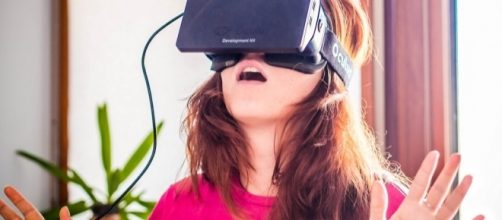Oculus' new $200 VR headset won't need a phone or PC https://t.co/rKJkfpPTdx pic.twitter.com/PD0Vw26rGe
— TNW (@TheNextWeb) July 13, 2017
Facebook has announced that they will be releasing a new virtual reality headset combining the best features of the Oculus Rift with new, more powerful hardware in 2018. The new headset -- code-named "Pacific" -- will continue to follow in the Oculus Rift's footsteps as a three-in-one gaming, video streaming, and social networking device. Unlike the Oculus Rift, The Pacific comes in at half the cost of its predecessor.
Starting at $200, the Pacific is projected to be the most cost-effective Vr Headset on the market. The Pacific, when released, will be the cheapest VR headset made by Oculus to date.
The specs so far
So far, what Facebook has told us about the Pacific -- what the company believes will be their "sweet spot" between the Gear VR and Rift -- is limited but promising. The Pacific will boast a smaller, lighter size than both the Oculus and Samsung's Gear VR without sacrificing performance. In fact, the Pacific reportedly will have more powerful graphics thanks to its Qualcomm Snapdragon mobile chip.
The headset's interface is more similar to its competition, the VR Gear, but will also be controllable through the included wireless remote However, unlike the Oculus, the Pacific will not have positional tracking -- this means that the Pacific is unable to tell where the user is spatially.
This will, unfortunately, give the Pacific a major disadvantage as it competes with higher-end headsets that do include positional tracking.
VR partnership also confirmed
In addition to their announcement of the Pacific, Facebook announced that they and their Oculus team will be partnering with Xiamoi. The Chinese company will be handling the distribution of the new VR headset globally. While the Pacific will still feature Oculus branding, Xiaomi will be releasing an exclusive, custom version for China under the Xiaomi name. Xiaomi's headset will be able to run several Xiaomi software applications in addition to many downloadable VR games and apps. Through this partnership, Oculus will be able to tap into the Chinese VR market -- Facebook is banned in China, so Oculus had been unable to enter the Chinese market in the past.
Is this the long-awaited Santa Cruz?
At last year's Oculus Connect, Oculus showed off a prototype for another VR headset, the Santa Cruz. The Santa Cruz featured inside-out tracking, a common positional tracking method used in many VR headsets. Because of these vast differences in features between the Santa Cruz displayed last year and the new Pacific headset, it is likely that Oculus is putting the Santa Cruz on the back-burner while they focus their attention on getting their own affordable, self-contained headset onto the market.


